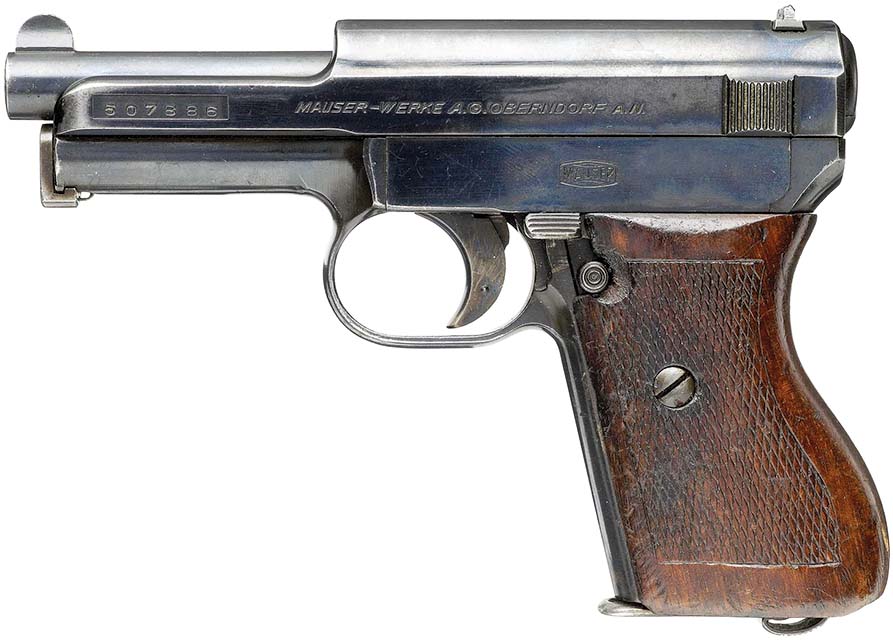By Michael Heidler
The Forensic Institute of the Security Police (Kriminaltechnisches Institut der Sicherheitspolizei / KTI) was a department of the Reich Main Security Office (Reichssicherheitshauptamt / RSHA). The Security Office was an organization subordinate to Heinrich Himmler in his dual capacities as Chief of German Police (Chef der Deutschen Polizei) and Reichsführer-SS. The organization’s stated duty was to fight all enemies of the Reich inside and outside the borders of Germany. In 1944, the KTI began to deal with, among other things, toxic bullets for small arms. The initial spark was the arrest of a Russian agent in the area of the Heeresgruppe Mitte in January of that year.
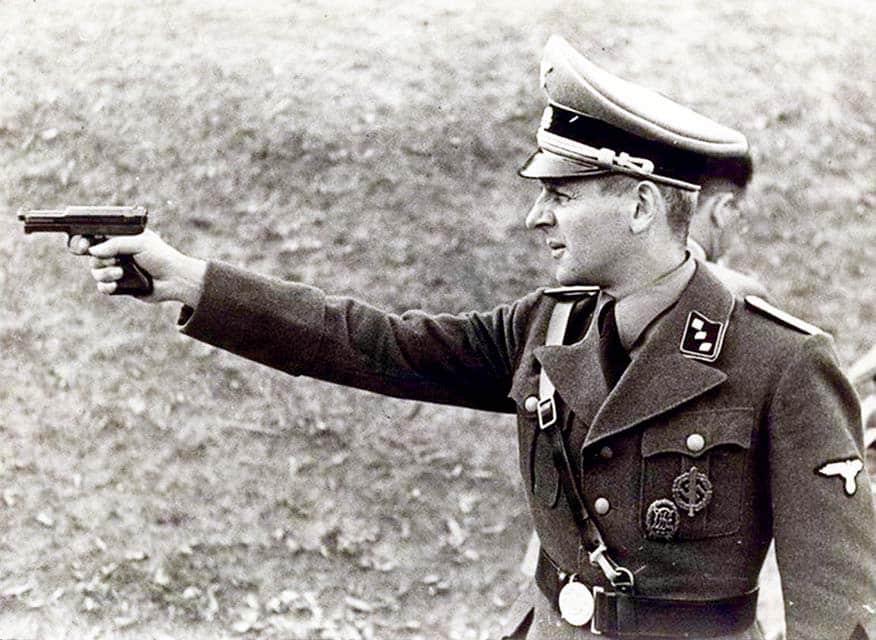
When he was arrested, numerous objects were secured, including a Mauser pistol in 7.65mm caliber, six associated cartridges and two small bombs, one incendiary and one explosive. The use of such a pistol is not unusual, because at that time the small caliber was very common among the self-loading pistols used in the German Reich, and it would have made it difficult to draw conclusions on the perpetrator in an assassination attempt. The serial number 557 453 and the circumstances indicate that the weapon may have been a Mauser model 1934.
However, the security forces became aware of the ammunition. The standard brass cases with the headstamp “Geco D 7.65” were made in Germany by the company Gustav Genschow & Co. The bullets, however, did not conform to any common pattern: hollow-pointed bullets with a steel cap and a four-piece coat. Of course, such suspicious ammunition had to be examined more closely, which is why the seized objects were delivered to the “Chemical Investigation Center” of the Heeresgruppe Mitte on January 13 and 15. There, it was first noted that each of the bullets contained 0.04 grams of an unknown substance that was not one of the commonly used poisons or explosives. It could not be more precise, because the existing equipment of the field laboratory was not sufficient for a precise analysis of all chemical substances.
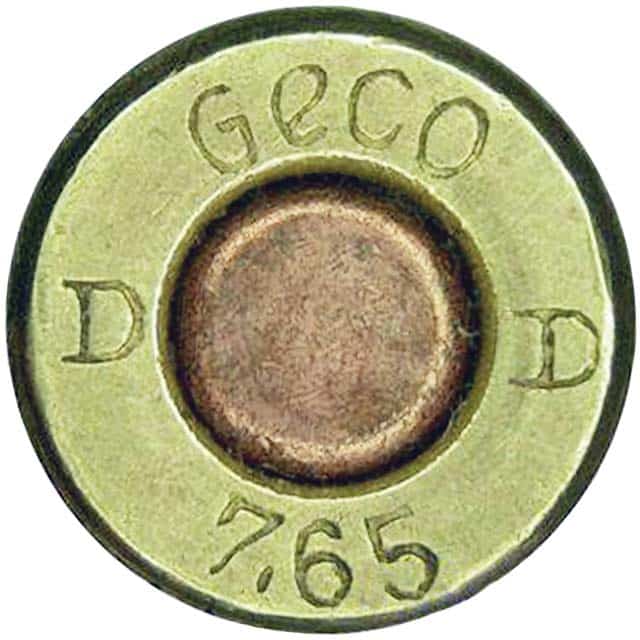
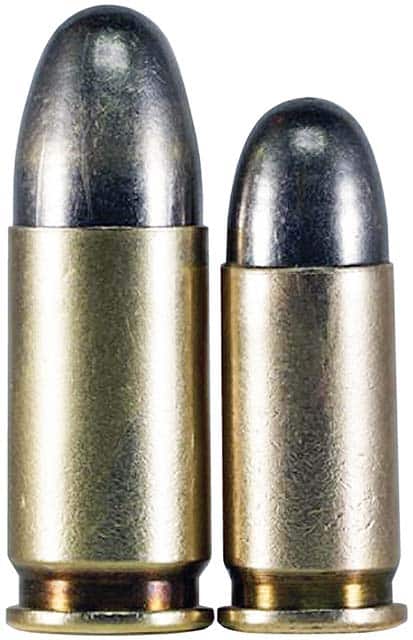
The commander of the security police in Minsk therefore decided to have the prisoner and all objects brought to the Reich Security Main Office in Berlin. There, the agent was questioned again on January 26, and he started to talk. As it turned out, the man should have committed an assassination attempt on SS-Gruppenführer Curt Gustav Friedrich Walther von Gottberg. He received all his equipment by courier from Moscow. The bullets were filled with poison and would be deadly even with the slightest wound. He had received three cartridges, but had three more left from his previous mission. Accordingly, the Russians had probably used such ammunition more often in assassinations.
That same day, the RSHA handed over the items to the Forensic Science Institute. The analysis of the substances was difficult. It was only on March 21 that the final report was finished. The poison was the extremely toxic Aconitine, which can be obtained, for example, from the monkshood plant. It is considered one of the strongest plant toxins ever. The lethal dose for an adult is 4mg. The report thus comes to the conclusion that the bullets with their filling of 20mg to 30mg of Aconitine must be absolutely deadly, because “by a shot, always several blood vessels are injured, so that the poison can get into the body.”
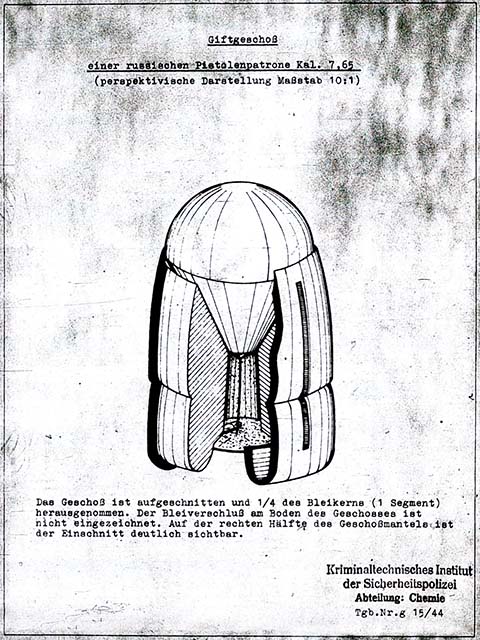
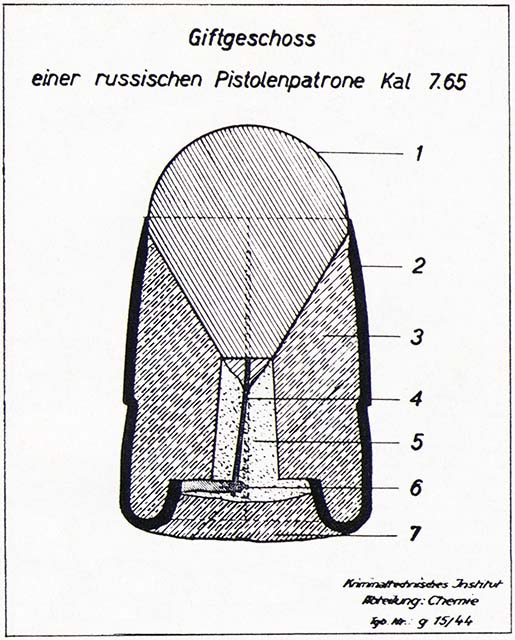
BULLET MAKEUP
The sectional drawing from the KTI report shows the poison bullet’s internal structure:
1. Bullet point made of iron
2. Coat with 4 incisions
3. Lead core composed of 4 segments
4. Retaining wire (soldered to 1)
5. Aconitine (water-soluble)
6. Solder, it is used to attach the retaining wire
7. Lead plug, between poison and lead is a piece of paper
The functioning of the bullet is indeed very well thought out. Its coat has four elongated cuts as predetermined breaking points. In the moment of impact, the rounded steel tip pushes the four-part bullet along the predetermined breaking points apart. The hollow tip and the sharp parts of the breaking bullet increase the wound formation. The poison gets into the wound and the bloodstream even if the shot is poorly aimed.
In a request to the KTI from April 1944, the General of the Nebeltruppe (rocket artillery) pointed to the problem of such bullets, because “the use of poison or poisoned weapons is forbidden according to Article 23a of the ‘Convention respecting the Laws and Customs of War on Land’ from October 18, 1907. This includes well and food poisoning, poisoned arrows and bullets.” However, the answer did not elaborate on this but merely emphasized that it was special ammunition of the Soviet Russian secret service and not captured Army ammunition.

The design of the small bullet with its extremely effective content seemed to have impressed the KTI deeply. It was considered so important that they sent a report to SS-Sturmbannführer Otto Skorzeny, who immediately expressed his interest in it. In the meantime, the Army Weapons Office (Heereswaffenamt) also got wind of the matter, and in June 1944, requested a copy of the sectional drawing from the KTI.
Even the Reichsführer-SS Heinrich Himmler personally received detailed information including drawings and photos in August.
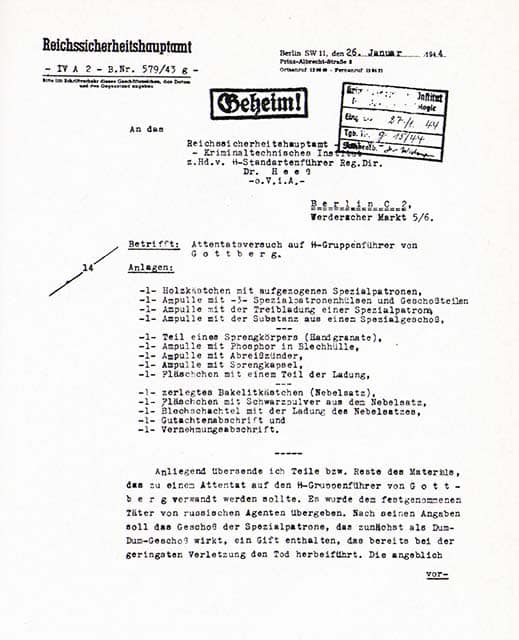
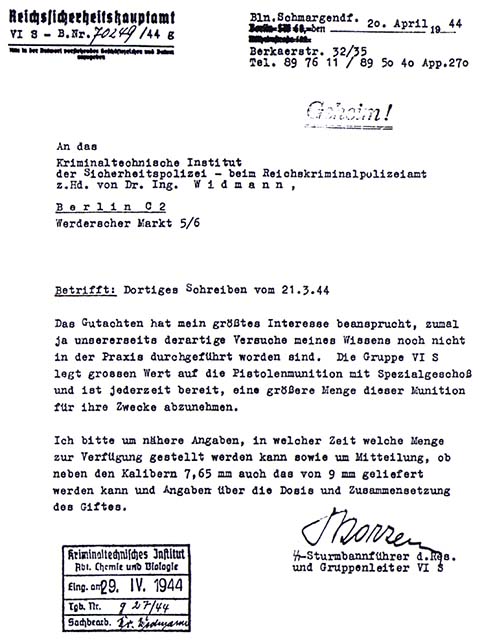
Such a kind of special ammunition would fit well into the ordnance of the Waffen-SS and the SS police units. In fall 1944, therefore, a group under the direction of Dr. Joachim Mrugowsky (Chief Hygienist and Chief of Staff III at the Reich Medical Doctor SS and police) began with experiments on humans. The Sachsenhausen Concentration Camp was selected because since 1941, the KTI had maintained a workshop for the production of toxic products, such as hydrocyanic ampoules, by prisoners. For the following experiments 7.65mm bullets were filled with 38mg of Aconite Nitrate in crystalline form. On September 11, the group of doctors (including Dr. Albert Widmann) selected five Russian prisoners who had been sentenced to death; these bullets were shot in the upper part of the left thigh. In two cases, the bullet went straight through, and no effect of the poison was observed. The other three suffered for about two hours until they died. The surviving report describes in detail the development of reflexes, pupils, salivation with foaming and the unsuccessful attempts to vomit: “The motor unrest increased so much that the persons flung themselves up, and down, rolled their eyes and made meaningless motions with their hands and arms. […] Death occurred 121, 123 and 129 minutes after entry of the projectile.” Despite insignificant injuries, the poison had thus unfolded its deadly effect.
As late as September 1944, Dr. Widmann received an order of 200 poison bullets in 7.65mm caliber. The client was a good friend of Otto Skorzeny: SS-Obersturmführer Adrian Freiherr von Foelkersam of the SS-Jagdverband Ost. Whether these bullets were actually delivered, is not known. In general, so far no evidence for the use of toxic bullets on the German side could be found. Von Gottberg committed suicide on May 31, 1945, in British custody and Dr. Mrugowsky was hanged in 1948 in the War criminal prison Landsberg.
| This article first appeared in Small Arms Review V24N4 (April 2020) |



